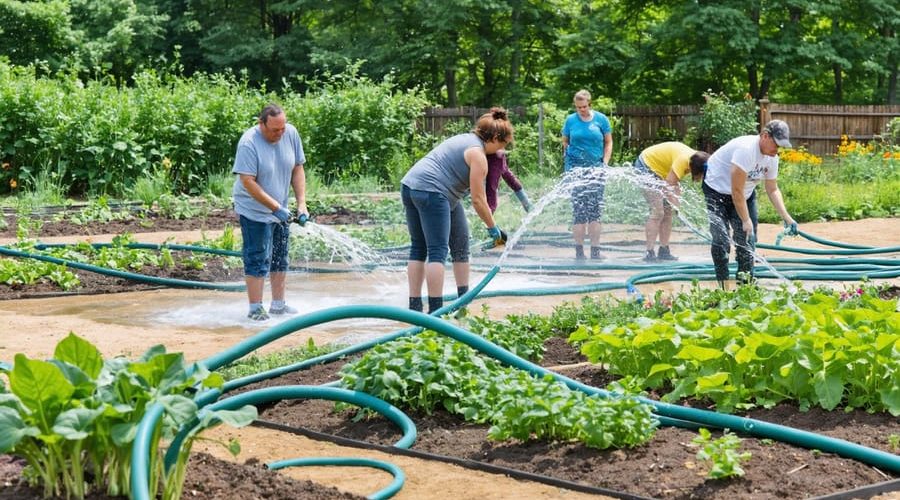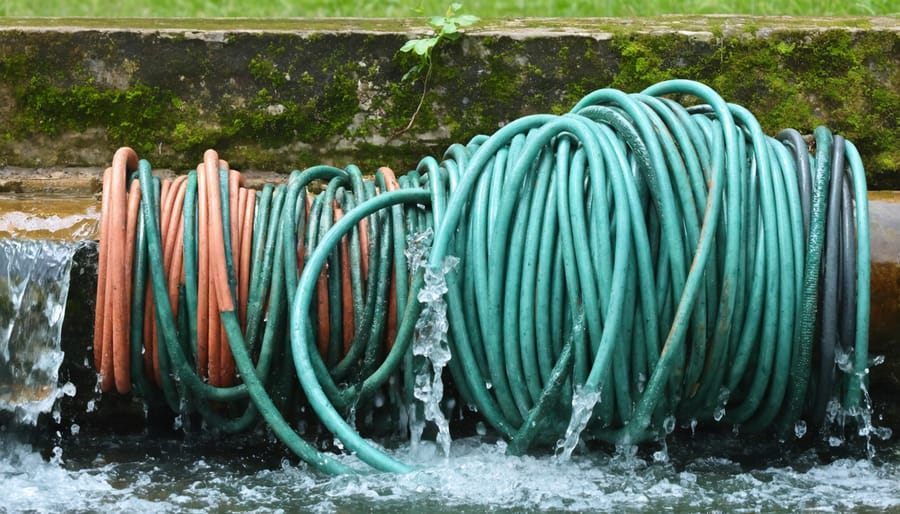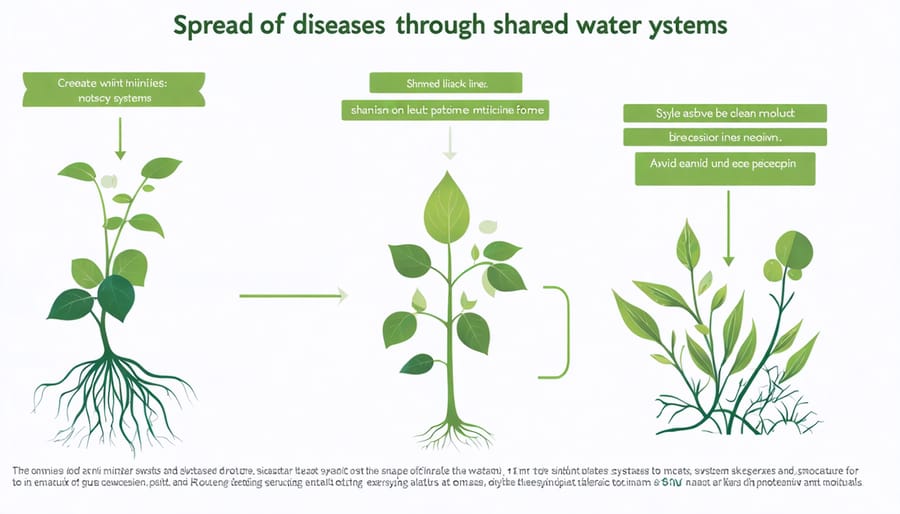
Why Community Water Gardens Could Be Drowning Your Success
Community gardens, while celebrated for bringing people together through shared green spaces, harbor significant challenges that potential participants should carefully consider. Beyond the idyllic vision of neighborhood cooperation and fresh produce, these collective growing spaces often face complex operational hurdles and social dynamics that can impact their success and sustainability.
Limited plot availability creates fierce competition in popular areas, leading to long waitlists and frustrated community members. The shared nature of these spaces introduces concerns about theft, vandalism, and inconsistent maintenance standards among gardeners. Additionally, navigating complex personalities and differing gardening philosophies can transform these peaceful havens into sources of neighborhood tension.
Managing these gardens requires substantial time commitment, organizational skills, and resources that many communities struggle to maintain long-term. Weather-related challenges affect entire communities simultaneously, while pest and disease problems spread more rapidly through concentrated growing areas. Understanding these potential drawbacks helps stakeholders make informed decisions about participation and management strategies in community gardening initiatives.
Resource Management Headaches
Water Usage Conflicts
Water access and distribution often become contentious issues in community gardens, especially during dry seasons or in areas with water restrictions. While efficient resource management is the goal, conflicts can arise when multiple gardeners need water simultaneously. Some members might use more than their fair share, leaving others with insufficient water for their plots. This can lead to tension, particularly when growing water-intensive plants or during peak gardening hours.
Common disputes include disagreements over watering schedules, concerns about water waste, and friction over water bill sharing. Some gardeners might leave sprinklers running too long or water during the hottest parts of the day, leading to inefficient use and higher costs for everyone. In community gardens with shared water meters, determining fair usage allocation and payment distribution can become challenging.
Additionally, different growing styles and plant choices can create imbalances in water needs. While some members focus on drought-resistant plants, others might prefer crops requiring frequent watering, making it difficult to establish equitable usage policies that satisfy everyone’s needs.

Equipment Sharing Struggles
Sharing tools and equipment in a community garden can become a significant source of frustration. While pooling resources seems cost-effective initially, the reality often presents numerous challenges. Common tools like shovels, wheelbarrows, and watering equipment frequently go missing or end up damaged due to improper use or neglect. When multiple gardeners need the same tool simultaneously, especially during peak planting or harvesting seasons, tensions can arise.
Maintenance equipment like lawnmowers or tillers requires careful coordination and proper care. Some gardeners may not know how to operate power tools correctly, leading to breakdowns that affect everyone. The cost of repairs and replacements often becomes a point of contention, with debates over who should pay for damages or normal wear and tear.
Storage security is another ongoing concern. Even with locked sheds, tools can mysteriously disappear or end up in personal garages instead of the communal space. Creating and enforcing an effective checkout system proves challenging, especially in larger gardens with many members. This often leads to some gardeners eventually purchasing their own tools, defeating the purpose of shared resources.
Competition-Related Tensions
Plant Selection Disputes
Plant selection can become a significant source of tension in community gardens, especially when space is limited. Different gardeners often have conflicting visions about what to grow, leading to heated debates over species choices. Some members might prefer ornamental water plants and flowering varieties, while others advocate for edible plants or native species that support local ecosystems.
Space allocation disputes frequently arise when certain plants require more room or specific conditions. Fast-growing species can overshadow neighboring plots, while aggressive spreaders like mint or bamboo might invade adjacent areas. Water garden enthusiasts often clash over depth requirements, with some wanting deeper zones for water lilies while others prefer shallow areas for marginal plants.
The seasonal timing of different plants can also create conflicts. Spring planters might feel frustrated when summer gardeners take over their spots, while year-round gardeners may resist sharing space with seasonal members. These tensions are particularly evident in water gardens, where changing one area can affect the entire ecosystem.
Additionally, disagreements often emerge over invasive species management and chemical usage, especially when some members have strong organic gardening preferences while others favor conventional methods.
Show Season Stress
While community gardens can foster cooperation, the show season often brings unexpected stress and tensions. Many gardeners feel pressured to produce perfect blooms or maintain pristine water features for local competitions and garden tours. This competitive atmosphere can transform a peaceful hobby into a source of anxiety.
Some gardeners report feeling judged when their ponds or water gardens don’t match the elaborate displays of their neighbors. The pressure to win ribbons or receive recognition can lead to overspending on exotic plants and expensive equipment, straining both budgets and relationships within the community.
The preparation for shows and competitions can also create divisions among gardeners. Those who prefer casual gardening might feel excluded when others become intensely focused on winning. This competitive spirit sometimes leads to accusations of unfair practices, like using prohibited chemicals to enhance plant growth or manipulating water features for better aesthetic appeal.
Additionally, the stress of maintaining show-quality gardens throughout the season can be overwhelming, especially for newcomers or those with limited time. What starts as a relaxing hobby can quickly become a source of burnout when the pressure to compete takes precedence over the simple joy of gardening.
Maintenance and Responsibility Issues

Uneven Workload Distribution
One of the most challenging aspects of community gardens is ensuring everyone contributes their fair share of work. While some members diligently learn essential maintenance skills and show up regularly, others may become less involved over time, creating an imbalance in responsibility.
This disparity often leads to frustration among active members who find themselves shouldering most of the maintenance tasks, from clearing algae to maintaining water quality and caring for aquatic plants. The enthusiasm typically peaks during the initial setup phase but can wane as the reality of ongoing maintenance sets in.
The challenge becomes particularly evident during busy seasons when water features need extra attention. Some members might have legitimate reasons for reduced participation, such as work commitments or health issues, but this doesn’t lessen the impact on those picking up the slack.
To address this, many community gardens implement scheduling systems or rotation duties. However, enforcing these systems can be awkward and may create tension within the group. The voluntary nature of community gardens makes it difficult to mandate participation levels, often resulting in a core group of dedicated members handling most responsibilities while others enjoy the benefits with minimal contribution.
Cross-Contamination Risks
Community gardens, while wonderful spaces for growing and sharing, can face significant challenges when it comes to managing disease spread and water quality. Shared water sources, like communal ponds or irrigation systems, can become breeding grounds for harmful bacteria and parasites if not properly maintained. When multiple gardeners use the same water source, there’s an increased risk of spreading plant diseases from one plot to another.
The use of common tools and equipment also poses a cross-contamination risk. While most gardeners are careful with their practices, it only takes one instance of using contaminated tools to spread plant diseases throughout multiple garden plots. This is especially concerning in water features where algae and other water-borne issues can quickly affect the entire system.
Water quality management becomes more complex when multiple users are involved. Different gardening practices, such as the use of various fertilizers and organic materials, can affect the overall water quality in shared systems. Some gardeners might use organic methods while others prefer conventional fertilizers, creating potential conflicts and water quality issues.
Another concern is the spread of soil-borne diseases through shared pathways and water runoff. During rainy seasons, water can carry pathogens from one plot to another, making it challenging to contain plant diseases once they appear. This risk is particularly high in gardens with poor drainage or closely packed plots.

Administrative Challenges
Managing a community garden involves more complex administrative challenges than many enthusiasts initially expect. While organizing community garden activities can be rewarding, the day-to-day management often becomes overwhelming for volunteer coordinators.
One of the biggest hurdles is maintaining consistent leadership and delegation of responsibilities. Volunteer burnout is common, as the same few dedicated individuals often end up handling most tasks. This can lead to frustration and eventually impact the garden’s overall maintenance.
Financial management presents another significant challenge. Collecting membership fees, managing shared expenses, and budgeting for repairs or improvements can become contentious issues. Some gardens struggle with members who fall behind on their financial contributions, creating awkward social situations.
Record-keeping and communication can also be problematic. Tracking plot assignments, maintenance schedules, and tool inventory requires organized systems that volunteers might find tedious to maintain. Even with modern communication tools, ensuring all members stay informed about important updates and decisions can be challenging.
Insurance and liability concerns add another layer of complexity. Gardens need proper coverage to protect against accidents or injuries, but obtaining and maintaining appropriate insurance can be costly and complicated. Additionally, ensuring compliance with local regulations and handling any necessary permits requires ongoing attention and expertise.
While community gardens present significant challenges, from maintenance issues to social conflicts, these obstacles aren’t insurmountable. The key to success lies in establishing clear guidelines, maintaining open communication, and fostering a strong sense of community among gardeners. Consider implementing digital scheduling tools for shared resources, creating detailed written agreements, and appointing garden coordinators to manage conflicts. Regular community meetings can help address concerns before they escalate, while organizing educational workshops can improve gardening skills and promote better understanding among members. By acknowledging these challenges upfront and working together to find solutions, community gardens can flourish as valuable spaces for growing both plants and relationships, making the effort worthwhile despite the initial hurdles.
